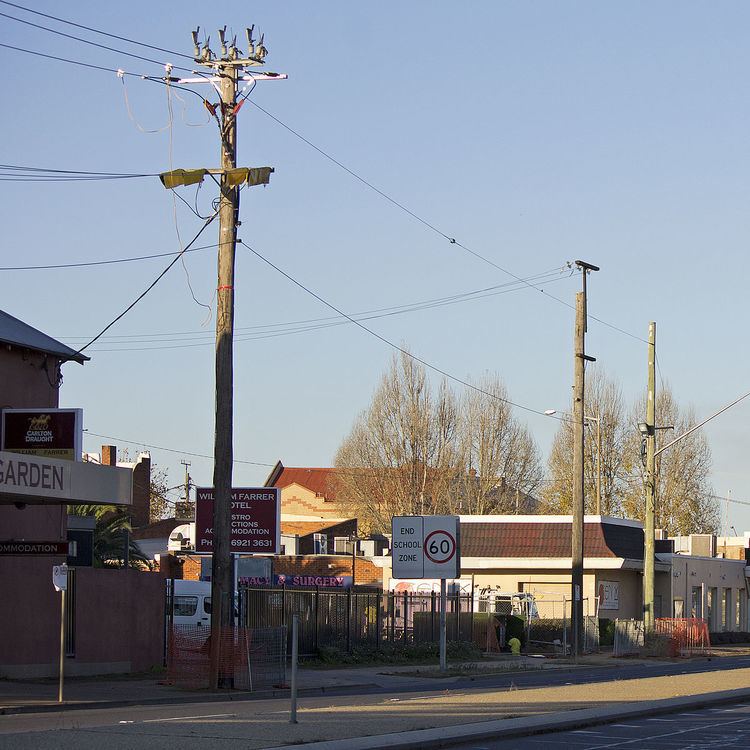 | ||
Undergrounding is the replacement of overhead cables providing electrical power or telecommunications, with underground cables. This is typically performed for aesthetic purposes, but also serves the additional significant purpose of making the power lines less susceptible to outages during high wind thunderstorms or heavy snow or ice storms. Undergrounding can increase the initial costs of electric power transmission and distribution but may decrease operational costs over the lifetime of the cables.
Contents
History
Telegraph cable undergrounding was considered in Northern Germany as early as 1870.
Comparison
The aerial cables that carry high-voltage electricity and are supported by large pylons are generally considered an unattractive feature of the countryside. Underground cables can transmit power across densely populated or areas where land is costly or environmentally or aesthetically sensitive. Underground and underwater crossings may be a practical alternative for crossing rivers.
Advantages
Disadvantages
The advantages can in some cases outweigh the disadvantages of the higher investment cost, and more expensive maintenance and management.
Japan
Most electrical power in Japan is still provided by aerial cables. In Tokyo's 23 wards, according to Japan's Construction and Transport Ministry, just 7.3 percent of cables were laid underground as of March 2005.
Europe
The UK regulator Office of Gas and Electricity Markets (OFGEM) permits transmission companies to recoup the cost of some undergrounding in their prices to consumers. The undergrounding must be in National Parks or designated Areas of Outstanding Natural Beauty (AONB) to qualify. The most visually intrusive overhead cables of the core transmission network are excluded from the scheme. Some undergrounding projects are funded by the proceeds of the national lottery.
All low and medium voltage electrical power (<50 kV) in the Netherlands is now supplied underground. Other EU countries such as the UK and Germany are undergrounding a portion of their cables each year.
California
In the United States, the California Public Utilities Commission (CPUC) Rule 20 permits the undergrounding of electrical power cables under certain situations. Rule 20A projects are paid for by all customers of the utility companies. Rule 20B projects are partially funded this way and cover the cost of an equivalent overhead system. Rule 20C projects enable property owners to fund the undergrounding.
Variants
A compromise between undergrounding and using overhead lines is installing air cables. Aerial cables are insulated cables spun between poles and used for power transmission or telecommunication services. An advantage of aerial cables is that their insulation removes the danger of electric shock (unless the cables are damaged). Another advantage is that they forgo the costs - particularly high in rocky areas - of burying. The disadvantages of aerial cables are that they have the same aesthetic issues as standard overhead lines and that they can be affected by storms. However if the insulation is not destroyed during pylon failure or when hit by a tree, there is no interruption of service. Electrical hazards are minimised and re-hanging the cables may be possible without power interruption.
